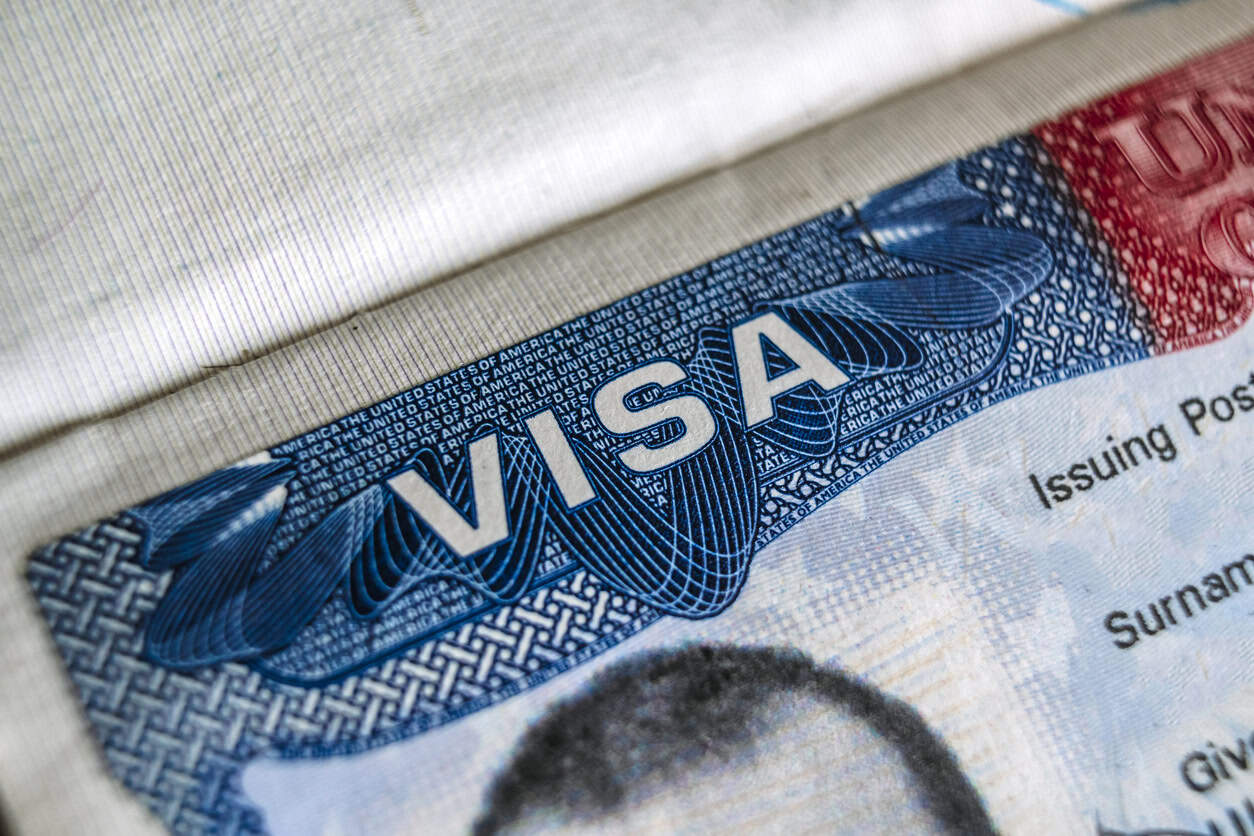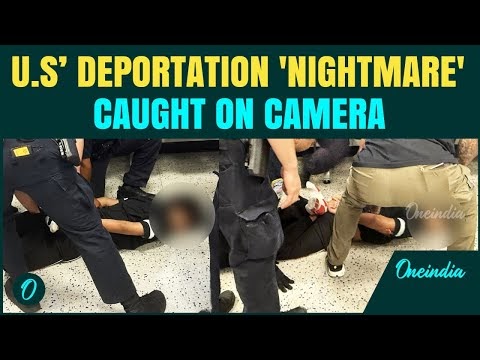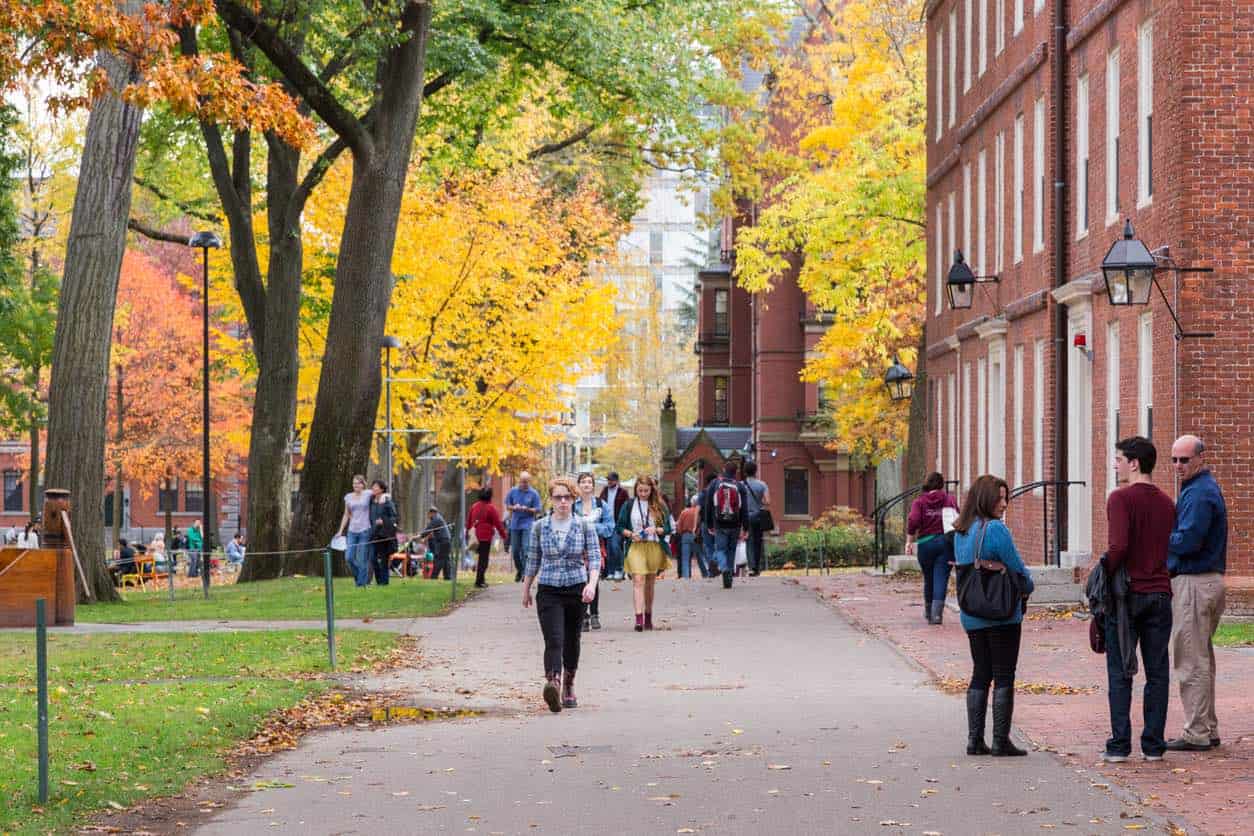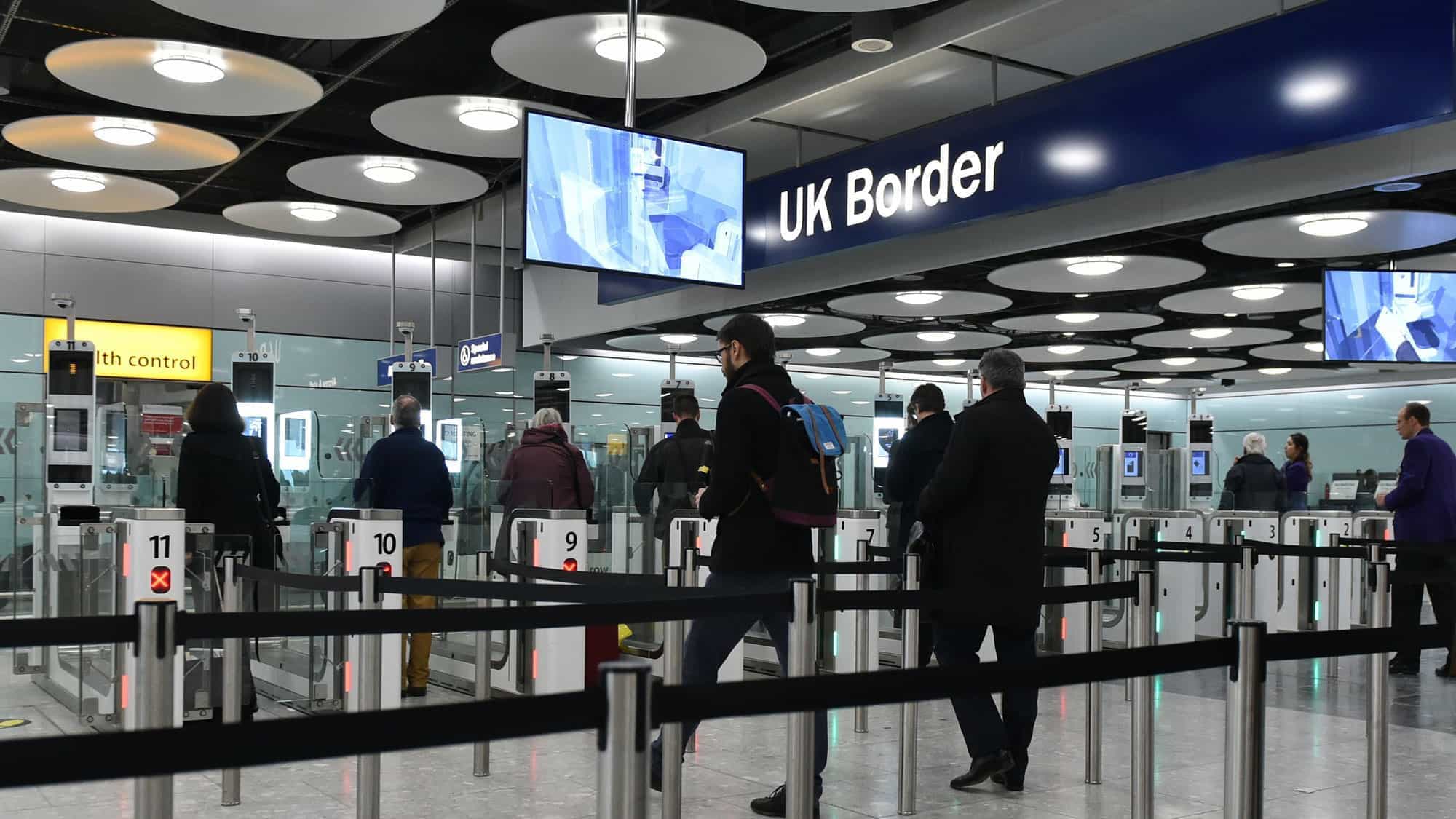The Home Office immigration white paper – Restoring control over the immigration system – has arrived, and there are some seriously consequential decisions for international students and the higher education sector.
The graduate route will be cut from two years (for undergraduates and master’s students) to 18 months. A range of new measures that will make visa sponsorship duties more onerous for higher education providers are coming into effect. There are steps to attract “top scientific talent.”
And most unexpectedly of all, the idea of introducing a levy on international student tuition fees is floated, “to be reinvested into the higher education and skills system.”
Mood music
For all that there are some serious, significant changes to student and graduate visas contained within the white paper, the last few years of policy turmoil has demonstrated that much of the impact of migration policy on student recruitment is determined by how changes are interpreted by prospective students weighing up their choices between different destination countries.
After having spent a couple of months in office making more positive noises about international students – and repeatedly patting themselves on the back about it – Labour has since plunged back into the murky waters of “talking tough on migration”, with students a political football yet again. How much this resonates abroad, and with what tenor the press in key recruiting countries reports on all of this, will probably have the greatest overall effect on what follows for the sector.
But the white paper itself is pretty bullish on international students – more so than we might have expected. There’s plenty of language that would have not looked out of place in a Conservative policy document, had Rishi Sunak not scrambled for an election instead of providing a proper response to the MAC review. So the Home Office tells us:
In recent years, we have seen an increase in students staying in the UK following their studies. Alongside this, we have also seen an increase in sponsored study visas for lower-ranking education institutions.
And that:
We have also seen a series of problems involving misuse and exploitation of student visas, where visas are used as an entry point for living and working in the UK without any intention to complete the course, and increasing numbers of asylum claims from students at the end of their course, even though nothing substantive has changed in their home country while they have been in the UK.
Home secretary Yvette Cooper’s introduction even tries to paint the last government as recklessly pro-international recruitment (our bolding):
Immigration policy during the last Parliament replaced free movement with a free-market experiment which incentivised employers to freely recruit from abroad rather than train at home, allowed education institutions to pursue unlimited expansion of overseas students without proper checks in place, and directly encouraged the NHS and care organisations to bring in far more staff from abroad while still cutting support or training places in the UK.
The Office for National Statistics’ recent finding that more than half of students arriving in 2020 still held leave after three years gets an airing – a point which those in the sector who have repeatedly been arguing that the vast majority of international students return home after graduating would do well to heed.
We’d also note that the white paper’s observation that growth in international recruitment has been particularly pronounced in those institutions further down the international rankings (made up as they are in the main of research output and spurious reputation surveys) is particularly inane, and yet another of those examples of the Home Office weighing in on education policy and the size and shape of the sector. It has its roots in the last government’s response to the MAC review, but it’s profoundly depressing to see it taken forward as a stick to beat teaching-intensive universities with.
The graduate route
The post-study work visa’s reduction in length will likely generate the most headlines, at home and abroad. Drawing on a new piece of evaluation conducted last spring, the Home Office concludes that:
Too many graduates allowed to stay in the UK following the successful completion of their studies are not moving into the graduate level roles for which the Graduate visa route was created.
A survey of just under 3,000 visa holders saw only 30 per cent report being in “professional” occupations, with others either not giving a straightforward answer to the question or (31 per cent) being in occupations whose entry requirements are likely to be A level equivalent or lower.
The build-up to the white paper’s publication was accompanied by a somewhat ludicrous debate over whether the (non-sponsored) graduate visa would somehow be limited to graduate-level work or salary – regardless of the fact that this would have meant turning it into a completely different visa with a heavy overlap with the skilled worker route.
Instead, the government has concluded that it should be reduced to 18 months – it appears that this applies only to undergraduate and master’s students, who currently are entitled to two years, rather than PhDs.
It’s not really spelled out how this new length has been arrived at – the charitable interpretation would be that this is sufficient time to allow graduates who are going to find graduate-level work to indeed find it, while those who are either unable to or were never really serious about doing so (in the government’s eyes) will be obliged to leave sooner.
This Home Office’s statement of the problem is that “the intention behind the Graduate route was to support the economy.” No mention is made of enhancing the UK’s attractiveness as a study destination, which was also a strategic objective at the route’s launch, and part of the international education strategy. The government no longer seems to want to have this conversation.
The survey that (in parts) provides the evidence base for the curtailment of the route also notes that 65 per cent of users said that gaining work experience was one of the most important reasons to engage in post-study work. But – as we’ve observed before – this function of the graduate route gets increasingly ignored. The Home Office frames all graduate route holders as needing to acquire graduate-level roles, as quickly as possible, and then disapproves of the contribution to net migration that this begets.
Diving a bit deeper into the graduate route evaluation that is, in theory, the justification for the changes, we again see the Home Office continuing to divide up the sector in terms of Russell Group and non-Russell Group, despite the fact that DfE under Labour has discontinued this practice in school performance management.
The majority of Graduate route users graduated from a non-Russell Group university (72%), while a quarter (26%) graduated from a Russell Group university.
While this finding doesn’t get a mention in the white paper itself, it’s of a piece with the pronouncements elsewhere that too many students seem to be coming through those less prestigious universities for the Home Office’s liking.
So what’s the upshot? Yet again, the impact modelling deployed in government to assess the effects of visa changes on the higher education sector is pretty pathetic. A student route evaluation published alongside the white paper sees 66 per cent of survey respondents say they were aware of the Graduate route (this gets us down to n = 1,265). Of these, 73 per cent said it influenced their decision. Of these, 29 per cent said they would not have come if it wasn’t available. Blithely multiplying these percentages together leads to an assumption (in the white paper’s technical annex) that 14 per cent of applicants would be put off if the graduate route were abolished.
Of course, the Home Office didn’t ask about reducing it by six months – it’s almost as if this decision was thrashed out in Whitehall horse-trading rather than a pragmatic example of policy implementation. As they are lopping a quarter of the graduate route, they have – genuinely – divided 14 per cent by four to get 3.5 per cent. This would equate to around 12,000 students a year if by some stroke of dumb luck the assumption turned out to be true. But what really comes across is that they have no idea.
For international students who are not put off, the result of shortening the route will be either to reduce the amount of time they have to accrue valuable work experience or – for those who are hoping to build a career in the UK – accelerated pressure on the job hunt. Institutions will need to get even more serious about advice, careers support, and evaluation. This is especially the case given all the other wholesale changes to work visas that the white paper detonates – students will need support in navigating a system that each year is a little different to how it was when they started thinking about where to apply.
Compliance
In a lengthy section entitled “responsible recruitment”, the white paper sets out some serious reforms to how UK Visas and Immigration (UKVI) will manage compliance among those higher education institutions sponsoring students. It’s argued that current thresholds are “too lenient” and “have left the route open to abuse and exploitation.”
We saw promises to make compliance standards stricter in the last government’s response to the MAC review, so there is a sense that some of what’s proposed in the white paper has been held back over the autumn to be made public here. UKVI has already been subjecting certain institutions to enhanced scrutiny for the last few months – but what’s proposed here goes quite substantially beyond that, and could be extremely challenging for some (especially small) institutions.
The current metrics used to determine whether a sponsoring higher education provider is fulfilling its duties are – via the annual basic compliance assessment, or BCA – having a visa refusal rate of less than 10 per cent, a course enrolment rate of at least 90 per cent, and a course completion rate of at least 85 per cent.
The white paper reveals that all of these measures will be made five percentage points stricter. To get an indication of how substantive such changes would be, it is noted that:
Data from the 2023–24 BCA suggests that 22 HEIs would not have met at least one of the tightened criteria set out in this paper. These institutions sponsored approximately 49,000 students while refusing 400 during their 12-month assessment period.
The technical annex also assumes that, of these 22, five would not be able to become compliant and therefore lose sponsorship rights, for at least a year. It puts the impact at between 9,000 and 14,000 fewer student visa grants, given that some students will be squeezed out of the system, whereas other genuine applicants will find alternative study destinations. It’s very much a guesstimate though – but the vastly increased requirements will put enormous pressure on higher education institutions to play it extremely safe with recruitment and agent partnerships, and to subject applicants to even more rigorous checks.
There’s more as well – UKVI will roll out new interventions for sponsors “close to failing metrics”, sign-up to the Agent Quality Framework will be mandated – a measure that has been proposed about a hundred times by this point, and the framework is already widely subscribed to – and a new RAG rating will be used to rate each sponsoring institution’s compliance. On this latter point, it’s mentioned that this will help the public assess institutions’ compliance, raising the intriguing possibility that we are about to get a lot more transparency from UKVI than was ever the case. And massively ramping up the pressure on universities (and, especially, smaller providers) to avoid falling foul of the rules.
It’s also worth not losing sight of the impact on international students themselves of all this bearing down on compliance – a measurably more bureaucratic study experience and, if not well implemented by providers, one that reinforces a sense of unwelcomeness as they are repeatedly asked to jump through hoops that home students do not face.
But probably the most important measure contained within the proposals – and, if implemented properly, an extremely welcome one – is obliging a provider who wants to request a larger CAS allocation to “demonstrate that they are considering local impacts when taking its decision on international recruitment.” There’s no further information on what this would look like, but housing must clearly be front and centre of the government’s thinking here – it’s something Yvette Cooper has mentioned on a number of occasions.
Asylum claims
In the run-up to the white paper’s publication, leaks to the press made it clear that one area where international higher education was in the Home Office’s crosshairs was over the proportion of asylum claims generated by those who had arrived in the UK on student visas – as we’ve recently written about on Wonkhe, this hit 16,000 in 2024, almost 15 per cent of all claims in the year.
The white paper says that this number has been increasing “at pace”, and also reveals that the majority of the students claiming asylum “do so as they approach their visa expiry date” – a fact which is ascribed to students making claims to stay in the UK, rather than due to changes in their own country.
It had been briefed to the media that applications for work and study visas by those deemed most likely to overstay and claim asylum would face higher rejection rates, through some of “pattern spotting” – a predictive measure that would inevitably face legal challenges, it should be noted. The white paper doesn’t, in fact, get too much into the detail here, rather setting out towards the end a “series of further measures” that will be explored.
One of these seems likely to be the use of international students’ proof of funds as evidence that they should not be eligible for asylum. We also get reference to potential “financial measures, penalties and sanctions” for sponsoring institutions – which would include universities. Detail on all this is going to come at a later point.
An international student levy?
When the Australian government commissioned a wholesale review of higher education – the Accord – one of the ideas that generated most pushback from the sector was for a levy on international students. It came out of the Accord commission’s interim report – then education minister Jason Clare said it was analogous to a “sovereign wealth fund” for the sector, and could be spent on infrastructure or research.
Australia’s research-intensives – the Group of Eight – called it a “damaging international student tax”. It was absent from the Accord’s final recommendations, replaced by a “futures fund” with joint contributions from universities and government. It still wasn’t popular and, like much of the Accord’s long-term thinking, there hasn’t been any sign of policymakers picking it up.
And yet – completely out of the blue, something similar has cropped up in today’s white paper:
The Government will explore introducing a levy on higher education provider income from international students, to be reinvested into the higher education and skills system. Further details will be set out in the Autumn Budget.
The Home Office wants to stress that this is not a final policy position – indeed, it is not something that one government department could move forward with on its own. The technical annex gives the “illustrative” example of a six per cent levy on tuition (and also notes that it would likely be passed on to students in higher fees).
A six per cent levy would generate something in the order of £570m, if we generously take into account the reductions in recruitment that the Home Office has modelled (the levy’s putative effects are transmogrified into assumptions about changes to student demand based on some work from London Economics that was only focused on students from the EU, but it’s not even worth getting into that).
There’s no way to reliably say which universities would lose out in terms of paying the levy – the government appears to be assuming that the students that won’t now come are the ones that they don’t want to come, which would likely hit less prestigious providers with more international students. You might imagine that some part of the levy would have to be used to prop up otherwise struggling providers in deprived areas – as we would otherwise lose them.
What that would amount to is a word we’ve not heard from any government for a good few years – redistribution. Though the idea of the sector as a single set of accounts is familiar among headline writers and UCU campaigners, in practice there’s been little deviation from the idea that the market is the fairest means to distribute resources (“the funding follows the student”) with the exception of a very small amount of funds for “world class” small and specialist providers.
Of course, by mentioning that the levy would be spent on “higher education and skills” opens the door to the money going elsewhere in the tertiary space. And, as with the apprenticeship levy, there’s no guarantee that the funds would not be top-sliced by the Treasury. There is absolutely no doubt that such a system, in the event that it came to pass, would be the subject of policy instability for many subsequent years, with everyone and their dog coming up with tweaks, fiddles and overhauls in how it should best be deployed.
We’ve noted that the Home Office vaguely intimates that the cost of the levy would be borne by students (via increased fees) rather than by higher education providers. This may well not be the case. The last decade has shown that providers will set the fees at the level where they think they can recruit, rather than with reference to cost of provision (or home fees). If fees could comfortably go up six per cent, then they already would have. So expect a serious lobbying effort from universities against any further plans to introduce this levy.
There are also substantial issues around devolution here. International student fees are really not there for the Home Office to grab and claim that they are a reserved matter, in the way that visas are. Presumably what’s being considered here would apply England-only – unless the devolved governments suddenly think this is worth going along with.
All the other stuff
Given that higher education is so intimately interconnected with both the visa system and the labour market, there’s barely a page of the white paper that doesn’t have some degree of consequence for the sector. Here’s a rundown.
Global talent: the one area where there is a commitment to increasing migration is “very high talent routes.” There is talk of simplifying the use of the global talent visa to recruit top scientific talent, as well as possibly doubling the number of overseas universities whose graduates qualify for the high potential individual work visa route. Eligibility here is based on international university rankings, and consequently is a complete mess.
Student dependants: there will be a new English language requirement for all adult dependants, at A1 on the Common European Framework of Reference for Languages (CEFR). It’s also noted that the intention is to increase this over time.
Short-term study visas: the government has already increased scrutiny of these visas for students coming on short (six to eleven month) English language courses, but there will also be a review of accreditation bodies, due to a very high refusal rate.
Immigration skills charge: This charge for companies sponsoring those on skilled worker visas (currently £1,000 a year for medium or large sponsors) will be increased by 32 per cent. It’s one of those things that sounds good on paper – reinvesting visa fees into the skills system – but has never been implemented properly, with money just vanishing into the Treasury. In theory, that’s now going to change, with the spending review to announce “skills funding for priority sectors” paid for out of these funds.
We should also note that higher education institutions are currently exempt from paying this charge for many categories of scientist, research managers and teaching professionals – so worth keeping an eye on the detail of the changes here when they do appear.
The Labour Market Evidence Group: this body, which had previously been referred to as “the quad”, is to be made up of the industrial strategy advisory council, the Migration Advisory Committee (MAC), Skills England (and the devolved nations’ skills bodies, to the extent the government will properly involve them rather than dumping policy on them), and the DWP. We don’t learn much that wasn’t in the MAC’s annual report, but this group’s evidence will be used to inform workforce strategies for sectors that have high levels of overseas recruitment.
The Immigration Salary List: this set of occupations eligible for discounts on skilled worker visa salary premiums is to be abolished. This was until recently known as the shortage occupation list, to give you a sense of how much churn successive governments have instituted in migration policy. Instead, the MAC is going to conduct a review of how discounts are used, with the result that the exact salary requirements for different jobs – which universities may want to recruit onto, or international graduates might want to progress to – are up in the air again. Currently those on student or graduate visas are entitled to a discount in the required salary for sponsorship.
International education strategy refresh: Nope, no mention of this. The last we heard this was due for “early spring”, and presumably now the white paper has landed the DfE and the business department have a freer hand to get it launched.
It’s hard to see how some of the original IES targets around diversification can persist, given the increased pressure on compliance (stay out of “risky” markets), potential plans to profile certain nationalities, and the fearmongering about students attending less prestigious institutions. A student number target feels a million miles away from how Labour is trying to position itself politically. And education export objectives, without any detail on what aspects on international activity the government is OK with increasing, are pretty meaningless. So what’s left to be in it?










